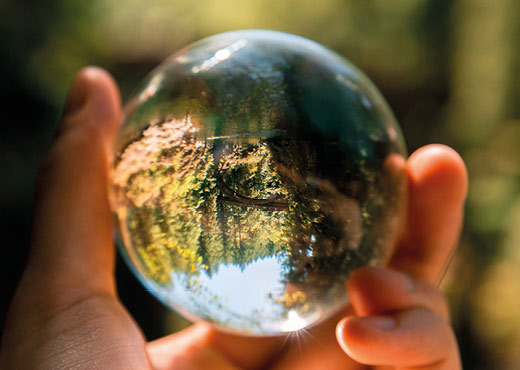
What is the circular economy?
The existing model for the economy is a linear one: To create, use, and dispose. A beginning, middle, and end.
In nature a tree grows using nutrients from the soil. It grows taking in sunlight for energy. Then it dies, decomposing back into the very soil it grew from, replenishing the soil with nutrients for more trees to grow. This is the perfect metaphor for the circular economy.
The premise of circular economy is to remove the 'end' process, reusing materials to create a circular one instead. This can be accomplished through the reuse of products, repairing of products, and finally the recycling of products.
How can product design development play a role?
The product design process is imperative to the circular economy. The design process is where 80% of the waste from a product is determined[1] This branch of product design is often called circular design.[2]
During the initial stages of product development the way in which the product will be disposed of must be strongly considered, and thus inform the nature of the design. Such as reducing or eliminating plastic use, and replacing them with more efficent recylables. Making products deconstructable by using fixings rather than adhesives, or perhaps even compostable using materials such as potato-starch pulp (a good example of this is compostable Nespresso pods).[3]
Designing products to have a long lifetime is also important, making sure that components can be replaced easily if they break. And avoiding marketing strategies such as 'planned obsolescence'[4] which is used strongly at apple.
Conclusion
It is an exciting time to be a designer, environmental awareness has spawned a whole new area of design; circular design. Everyday products and systems must be redesigned to ensure a sustainable future, as well as innovation in new product designs.
References
[1] https://www.ellenmacarthurfoundation.org/circular-economy/what-is-the-circular-economy

What is the circular economy?
The existing model for the economy is a linear one: To create, use, and dispose. A beginning, middle, and end.
In nature a tree grows using nutrients from the soil. It grows taking in sunlight for energy. Then it dies, decomposing back into the very soil it grew from, replenishing the soil with nutrients for more trees to grow. This is the perfect metaphor for the circular economy.
The premise of circular economy is to remove the 'end' process, reusing materials to create a circular one instead. This can be accomplished through the reuse of products, repairing of products, and finally the recycling of products.
How can product design development play a role?
The product design process is imperative to the circular economy. The design process is where 80% of the waste from a product is determined[1] This branch of product design is often called circular design.[2]
During the initial stages of product development the way in which the product will be disposed of must be strongly considered, and thus inform the nature of the design. Such as reducing or eliminating plastic use, and replacing them with more efficent recylables. Making products deconstructable by using fixings rather than adhesives, or perhaps even compostable using materials such as potato-starch pulp (a good example of this is compostable Nespresso pods).[3]
Designing products to have a long lifetime is also important, making sure that components can be replaced easily if they break. And avoiding marketing strategies such as 'planned obsolescence'[4] which is used strongly at apple.
Conclusion
It is an exciting time to be a designer, environmental awareness has spawned a whole new area of design; circular design. Everyday products and systems must be redesigned to ensure a sustainable future, as well as innovation in new product designs.
References
[1] https://www.ellenmacarthurfoundation.org/circular-economy/what-is-the-circular-economy

What is the circular economy?
The existing model for the economy is a linear one: To create, use, and dispose. A beginning, middle, and end.
In nature a tree grows using nutrients from the soil. It grows taking in sunlight for energy. Then it dies, decomposing back into the very soil it grew from, replenishing the soil with nutrients for more trees to grow. This is the perfect metaphor for the circular economy.
The premise of circular economy is to remove the 'end' process, reusing materials to create a circular one instead. This can be accomplished through the reuse of products, repairing of products, and finally the recycling of products.
How can product design development play a role?
The product design process is imperative to the circular economy. The design process is where 80% of the waste from a product is determined[1] This branch of product design is often called circular design.[2]
During the initial stages of product development the way in which the product will be disposed of must be strongly considered, and thus inform the nature of the design. Such as reducing or eliminating plastic use, and replacing them with more efficent recylables. Making products deconstructable by using fixings rather than adhesives, or perhaps even compostable using materials such as potato-starch pulp (a good example of this is compostable Nespresso pods).[3]
Designing products to have a long lifetime is also important, making sure that components can be replaced easily if they break. And avoiding marketing strategies such as 'planned obsolescence'[4] which is used strongly at apple.
Conclusion
It is an exciting time to be a designer, environmental awareness has spawned a whole new area of design; circular design. Everyday products and systems must be redesigned to ensure a sustainable future, as well as innovation in new product designs.
References
[1] https://www.ellenmacarthurfoundation.org/circular-economy/what-is-the-circular-economy

